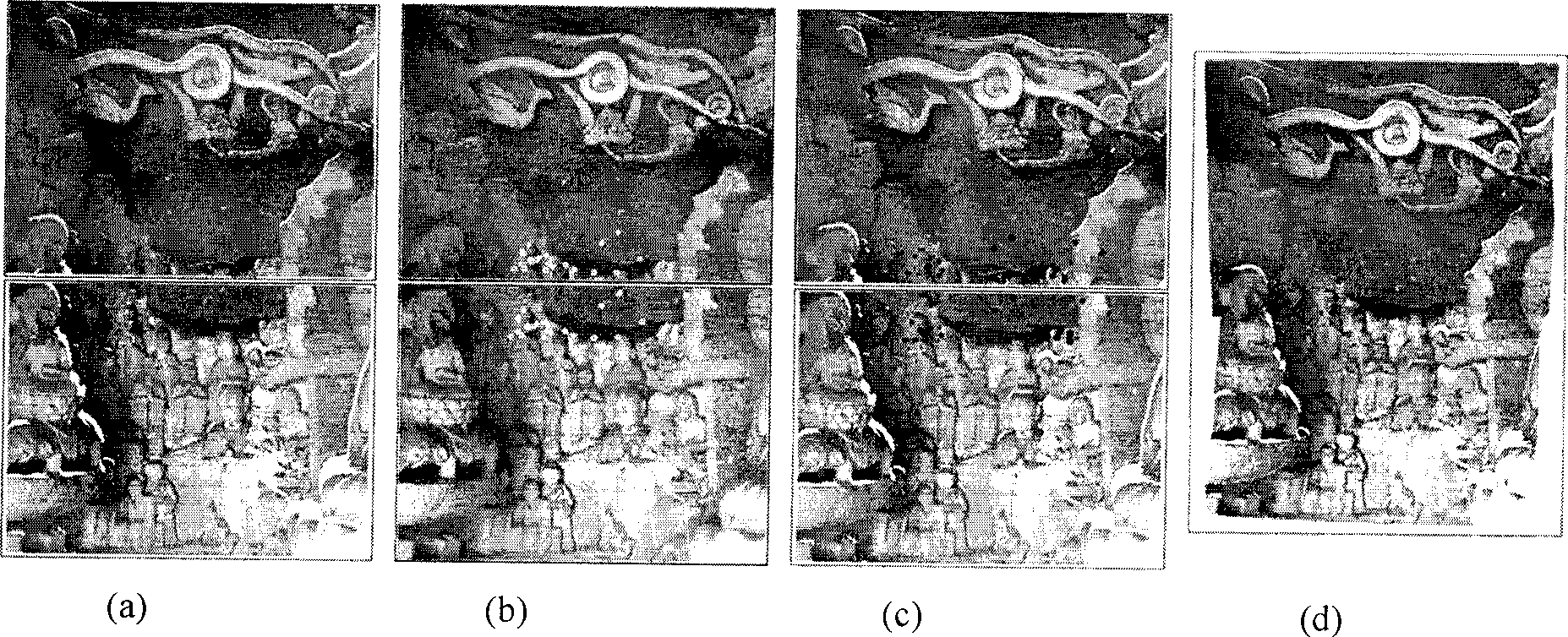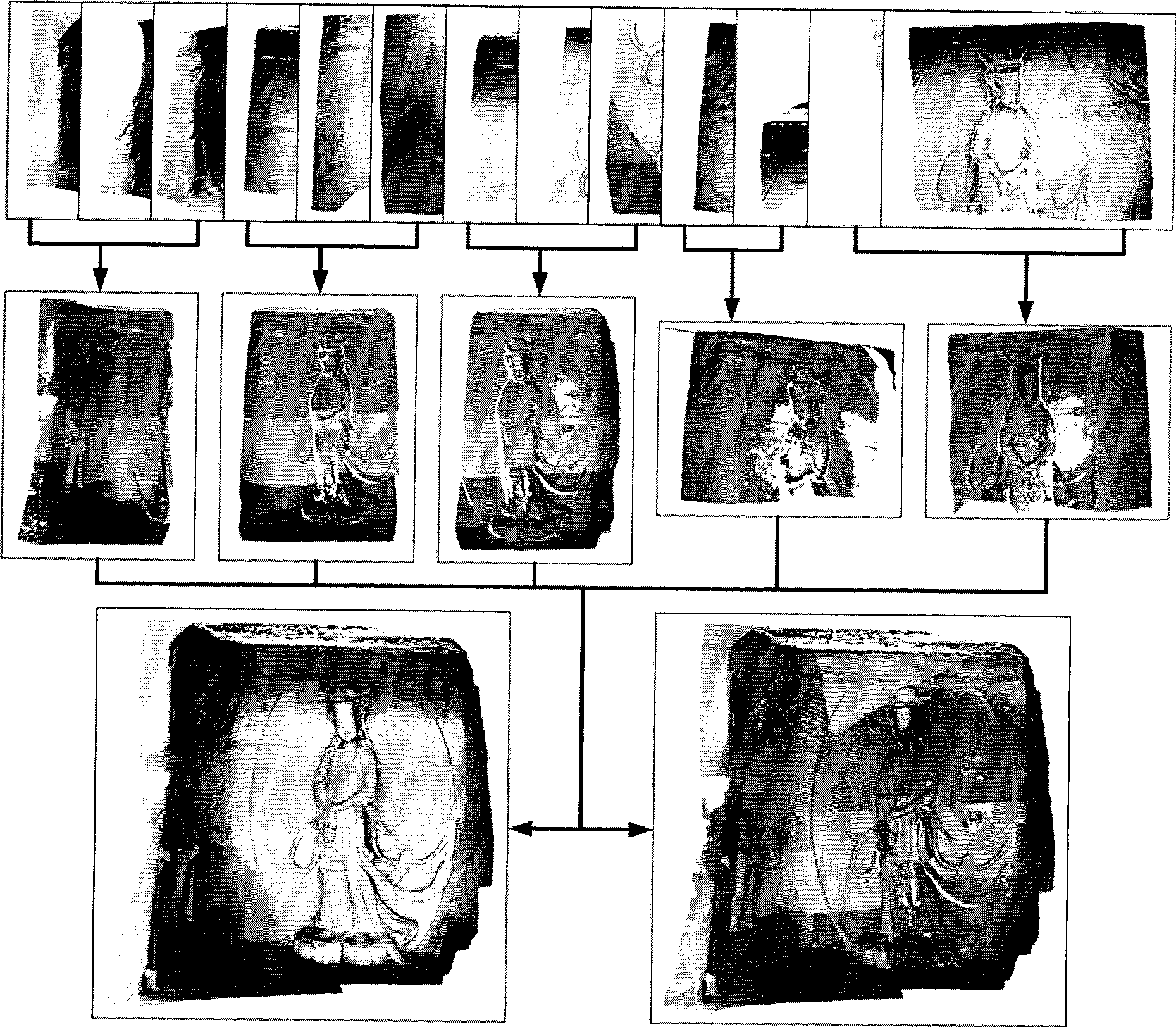Depth image autoegistration method combined with texture information
A technology of depth images and texture images, applied in the field of 3D model reconstruction of cultural relics in digital museums, can solve the problem of difficult to ensure the overlapping area between depth image sequence data and so on.
- Summary
- Abstract
- Description
- Claims
- Application Information
AI Technical Summary
Problems solved by technology
Method used
Image
Examples
Embodiment Construction
[0055] Such as figure 1 As shown, the present invention includes the registration of two scan data and the registration process of multiple scan data, specifically as follows:
[0056] 1. Extract or generate texture images from scan data.
[0057] Let P and Q be the scan data to be registered, and the texture image and depth image of P are I p and R p , the texture image and depth image of Q are I q and R q . If P and Q already contain texture images, they are directly extracted and converted into grayscale images as I p and I q , if P and Q do not contain a texture image or if the included texture image cannot be registered, first generate a texture image based on the depth image.
[0058] Given a depth image R, then Let Γ be a geometric feature descriptor, ∀ v ∈ R 3 , Γ(v) represents the eigenvalue at v, and can linearly transform the eigenvalues of all vertices so that their val...
PUM
 Login to View More
Login to View More Abstract
Description
Claims
Application Information
 Login to View More
Login to View More - R&D
- Intellectual Property
- Life Sciences
- Materials
- Tech Scout
- Unparalleled Data Quality
- Higher Quality Content
- 60% Fewer Hallucinations
Browse by: Latest US Patents, China's latest patents, Technical Efficacy Thesaurus, Application Domain, Technology Topic, Popular Technical Reports.
© 2025 PatSnap. All rights reserved.Legal|Privacy policy|Modern Slavery Act Transparency Statement|Sitemap|About US| Contact US: help@patsnap.com



